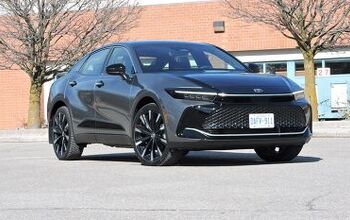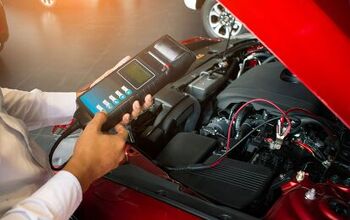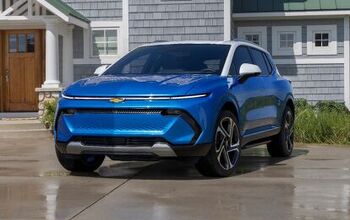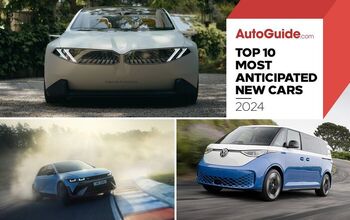Lexus CT200h Gets 134-HP, 42-MPG Average

Lexus has been teasing us with tasty bits of info about its new CT200h hybrid hatchback and has finally revealed the details everyone really wants to know. Aimed at younger buyers, performance is sure to be an important selling factor. That being said, it’s at least a little disappointing that the CT only gets a total of 134-hp – just like the Prius. In fact, it uses the same hybrid drivetrain with a 1.8-liter gasoline engine making 98-hp, mated to an 80-hp electric motor. That’s enough, says Lexus, for a 0-60 mph time of 9.8 seconds. Again, hardly exciting.
Perhaps more importantly in this segment is the fact that the CT200h gets a combined rating of 42-mpg. That’s several mpgs less than the Prius, so we’re interested to learn from Toyota why exactly that is.
Drivers will be able to control the engine’s performance thanks to a drive model selector that includes an EV, ECO, NORMAL and SPORT mode, with the ECO mode allowing for emissions free travel of up to a mile at speeds of up to 28 mph.
But there’s more to the CT than just its drivetrain, with Lexus claiming it wants the car to be a benchmark for handling in its segment, competing with cars like the BMW 1 Series hatch and Audi A3. In fact, in Sport mode, the CT gets more responsive steering and throttle response, while the suspension also firms up.
Be sure to check back in the coming weeks for AutoGuide’s review of the new CT200h.
GALLERY: Lexus CT200h
Official release after the jump:
Lexus CT 200h Abridged
The CT 200h’s Lexus Hybrid Drive features a unique energy management system. Through the application of brand-specific engineering solutions and software tuning, Lexus engineers have focused on enhancing both the environmental and driving performance of the full hybrid series/parallel system, as well as its low NVH levels.
With a highly-focused driver’s environment, the new Lexus CT 200h has been developed to combine superior handling and a dynamic driving experience with the ride comfort expected of any Lexus.
The Lexus CT 200h introduces a powerful new evolution of Lexus’ unique L finesse design philosophy to the heart of the premium compact segment.
The new premium compact full hybrid is equipped with a comprehensive range of active, passive and pedestrian impact safety features in the entry luxury segment.
Lexus CT 200h Hybrid Drive
- Unique Lexus Energy Management System
- 1.8-liter 98 hp (73kW VVT-i) gas engine and 80 hp (60 kW) electric motor for total system power of 134 hp (100kW)
- Low emissions, remarkably low fuel consumption and almost no NOx or particulate emissions.
- EV, ECO and SPORT ‘on-demand’ drive modes for distinct, Dynamic or Relaxing driving moods
- Additional Energy Saving and Environmental Performance Measures
Through the application of specific engineering solutions, and a unique energy management system incorporating bespoke software tuning, Lexus engineers have enhanced both the environmental and driving performance of the Lexus Hybrid Drive system, as well as its low NVH levels.
In combination, the Lexus Hybrid Drive system’s petrol engine and electric motor generate a total system power output of 134 hp (100kW). Via an ECVT, the CT 200h will accelerate seamlessly from 0-60 mph in 9.8 seconds , and reach a maximum track speed of 112 mph. Conversely, the CT 200h boasts remarkably low fuel consumption -a combined EPA estimated fuel economy rating of 42 mpg.
Ultra-low Noise, Vibration and Harshness (NVH) characteristics are one of the key attributes of Lexus Hybrid Drive, and particular attention has been paid to minimizing engine noise and vibration. The rigidity of engine parts including the cylinder block and crank case has been optimized through in-depth Computer Aided Engineering (CAE) analysis. A highly rigid, ribbed aluminum cylinder head cover combines light weight with reduced noise and vibration.
Housing the electric motor, the electric generator, the power split device and the motor speed reduction device in one lightweight, highly compact transmission casing directly comparable in size to that of a conventional gearbox, the transaxle lies at the heart of the Lexus Hybrid Drive system.
The high performance, permanent magnet, synchronous 80 hp (60 kW) electric motor works in tandem with the gas engine to boost acceleration and power the driven wheels alone when the CT 200h is operating in EV mode. During regenerative braking, the motor also acts as a high-output generator, recovering kinetic energy as electrical energy to charge the system battery.
As with the electric motor, the generator is also of the AC synchronous type. The generator performs numerous functions within the Lexus Hybrid Drive system.
- A voltage boost converter, which boosts electric motor, generator and battery voltage to increase hybrid system power output;
- a highly compact inverter for the motor/generator, which converts the DC power from the battery into 650V AC power for driving the electric motor and, occasionally, the generator;
- and a DC/DC converter, which reduces the high voltage of the 202V system battery pack to 14V, supplying power to the accessory systems and charging the auxiliary battery.

With AutoGuide from its launch, Colum previously acted as Editor-in-Chief of Modified Luxury & Exotics magazine where he became a certifiable car snob driving supercars like the Koenigsegg CCX and racing down the autobahn in anything over 500 hp. He has won numerous automotive journalism awards including the Best Video Journalism Award in 2014 and 2015 from the Automotive Journalists Association of Canada (AJAC). Colum founded Geared Content Studios, VerticalScope's in-house branded content division and works to find ways to integrate brands organically into content.
More by Colum Wood































Comments
Join the conversation